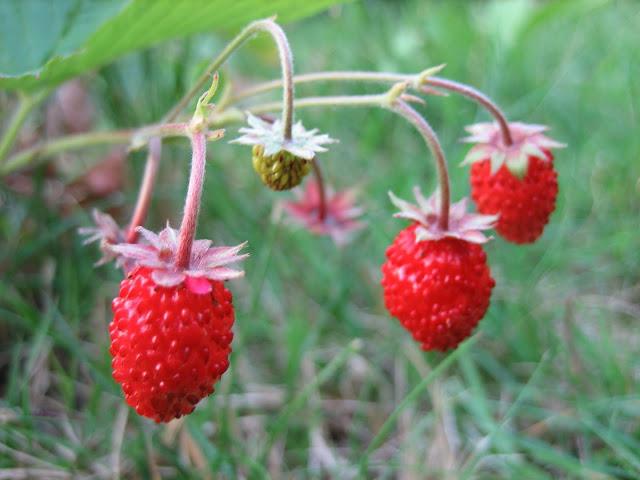Strawberry field - and a treat, and medicine
Perhaps, it is necessary to specify at once: strawberry field to the strawberry has nothing to do. They are not even related, as some gardeners believe. There are striking differences in the form of leaves and berries, and in taste and aroma.

The field strawberry is multiplied predominantlyvegetatively. The main part of berries ripens by the beginning of July. By the way, fruits are not berries, but tiny "nuts", immersed in the flesh of its base. The strawberry's fruit is in fact an overgrown flower stem. In its ripened state, it is bright red, very fragrant and sweet.
It grows in meadows, clear clearings, and the edges of mainly deciduous forests. You can meet her in forest fires, felling, at the side of the highway and on the slopes of the railways.
Perhaps you will be interested in the fact thatstrawberry is divided into several types: each grows on its territory (the Far East, Western Siberia, China, the European part of Russia, Mongolia), but they are all so similar that it is difficult for a person who does not have a special botanical education to distinguish a berries from the Transbaikalia from berries from the Moscow region.

The leaves of strawberries collected in spring or lateautumn, slightly dried and properly fermented, it can be replaced by tea, which is a much nicer one that we used to buy in the shops. By the way, it is not only tasty, but also useful for those who often catch cold. If you are not very familiar with the technology of preparation of a fermented tea, you can do the leaves of strawberries, cut in the flowering season (they are only dried in the shade associated with small bunches in limbo). The berries should be picked up in the morning, as soon as the dew comes off, or when the heat is gone. They dry them, like leaves, also in the shade or in an oven heated to 40 ° C. The dried berry darkens, becoming bright red.

The medicinal properties of strawberries were mentionedeven in ancient literature (Virgil, Ovid), and Mattsoli (botanist and doctor, XVI century.) wrote that her berries are used not only as a treat and food, but have, among other things, choleretic action, relieve thirst and heat, help with pain in stomach.
Alcohol tincture is an amazing remedy againstunwanted sunburn, against opacities on the cornea. Roots and leaves of strawberries heal ulcers and wounds, cut the spleen, strengthen the gums, loose teeth.
Strawberry Field is doing great job withcolds and even warns her, expels stones from the liver and kidneys, is used as a diuretic and anti-vitamin medication. Infusion of leaves is able to dilate blood vessels, and therefore effective in hypertension in the initial stage. Fresh berries (or dried and soaked) are indicated for gout, constipation, ulcers, atherosclerosis, hypertension. They not only improve digestion and excite appetite, but also increase hemoglobin. However, not all strawberries are useful. Sometimes unwanted reactions are possible - Quincke's edema, hives, itching.






